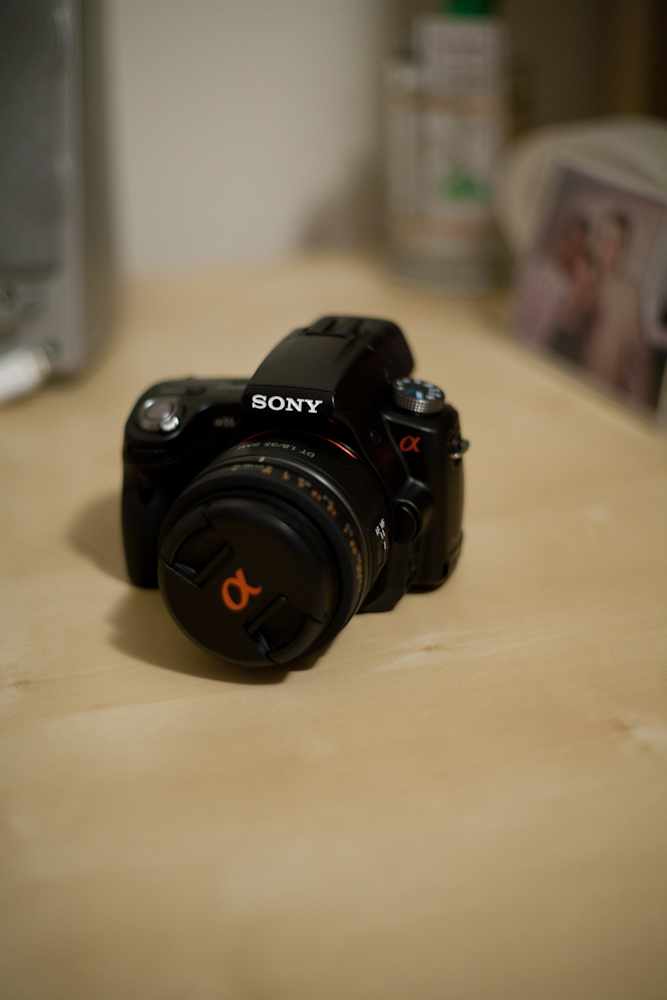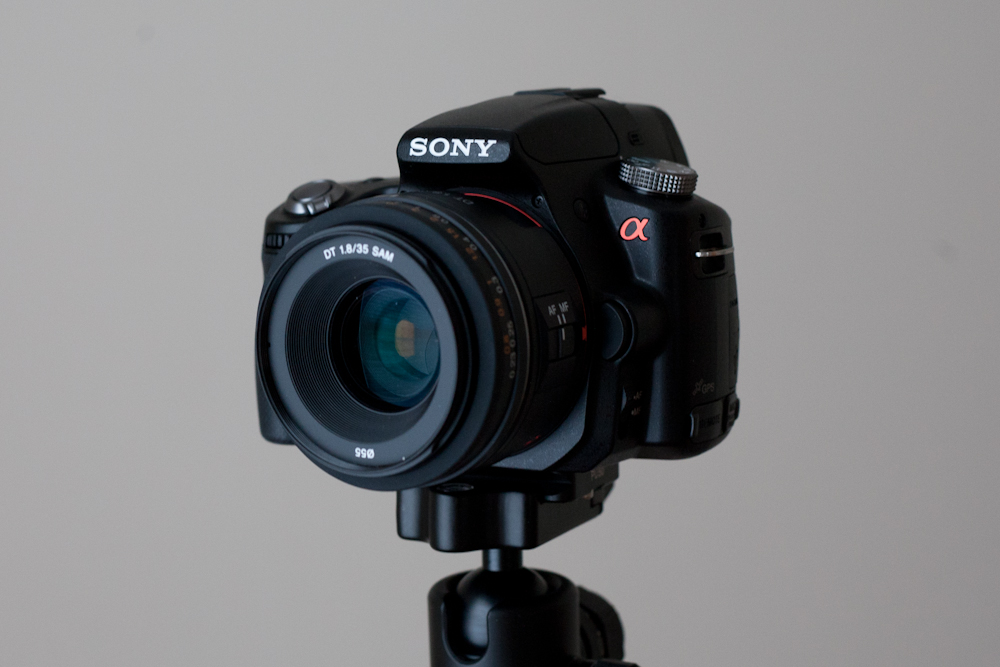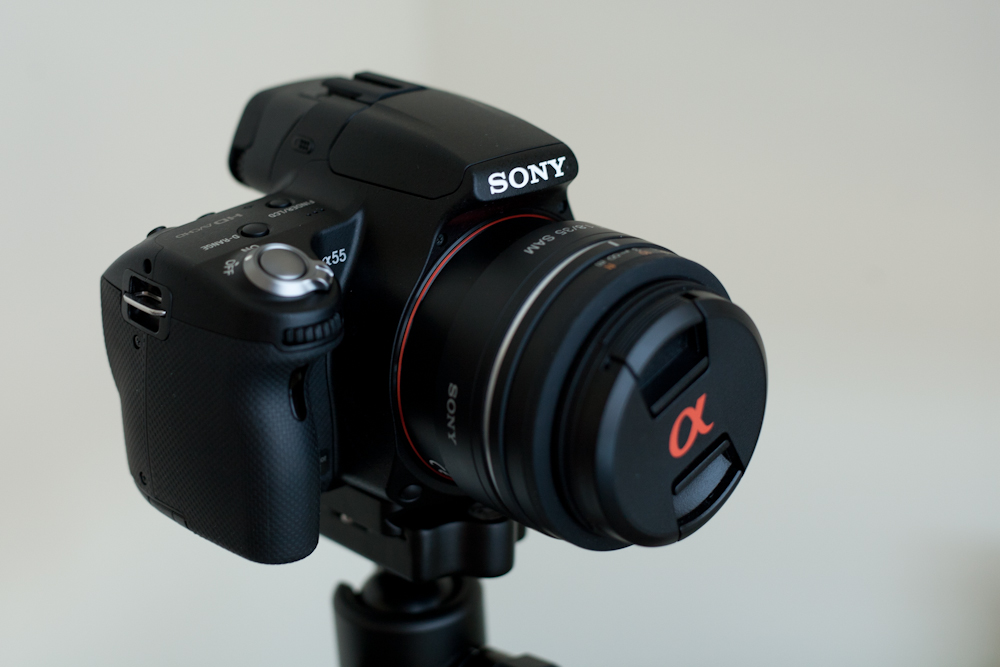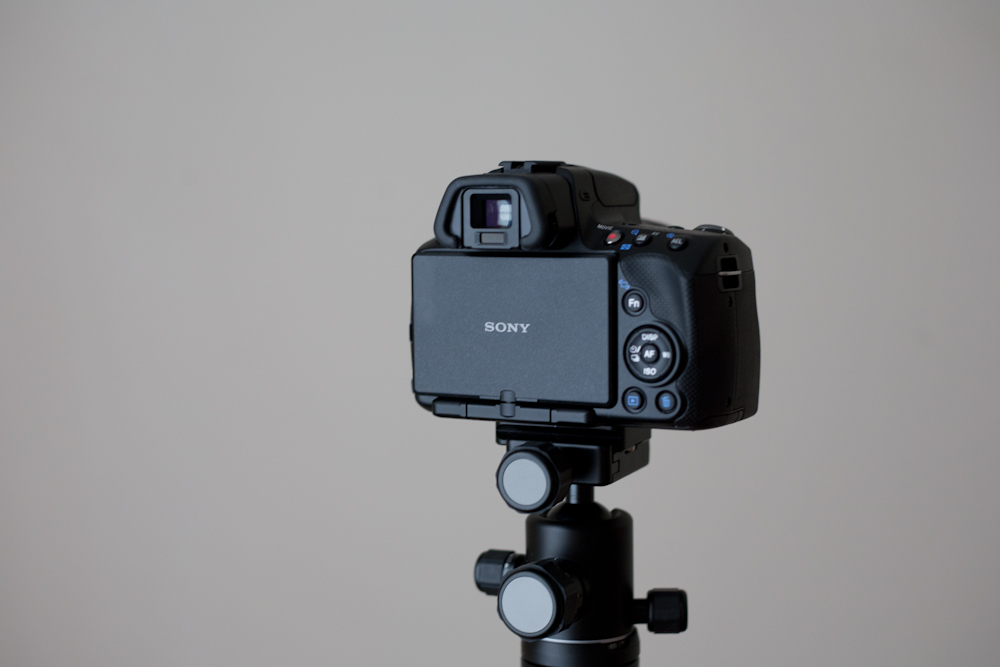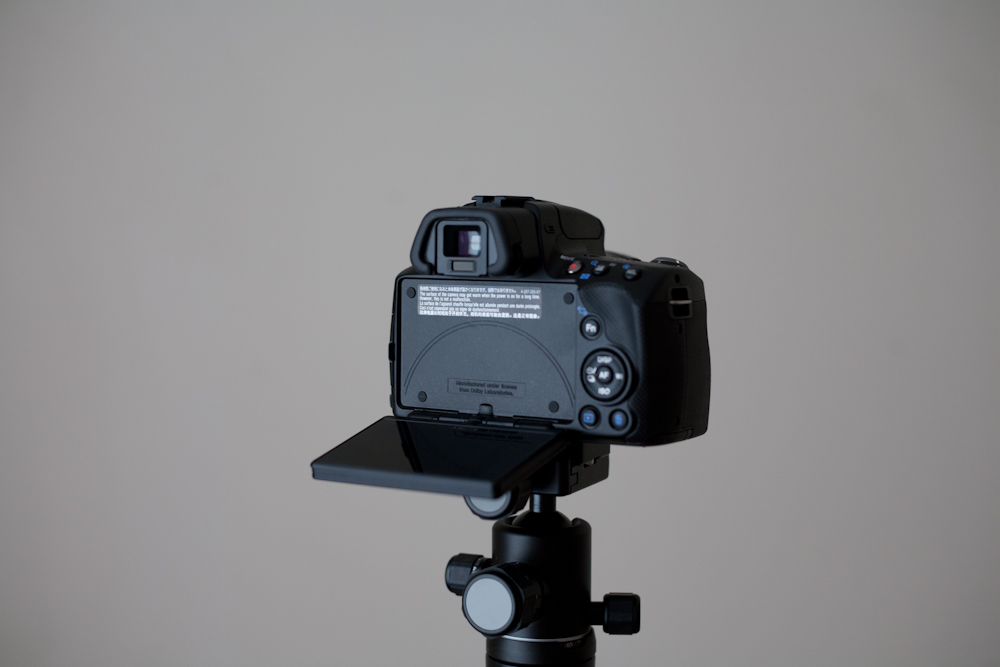Ever since Sony introduced the NEX series, specifically the NEX-5, I’ve been keeping a closer eye on Sony‘s photographic offerings. Like it or hate it, the NEX-5 is a pretty amazing camera. A full APS-C sensor in a body smaller than many point and shoot cameras. Brilliant! So I thought, if the NEX-5 is such a great camera, let’s see what they can do with a “normal” sized DSLR. Enter the Sony A55.
The Stats
- Resolution: 16.2MP
- Sensor: APS-C size Exmor CMOS sensor (23.5 X 15.6mm)
- Processor: BIONZ image processor
- Bit Depth: Not Specified by Manufacturer
- File Formats: RAW, RAW+JPEG, JPEG Fine, JPEG Standard
- File Size: 16:9 : L size: 4912 x 2760 (14M), M size: 3568 x 2000 (7.1M), S size: 2448 x 1376 (3.4M), 3:2: L size: 4912 x 3264 (16M), M size: 3568 x 2368 (8.4M), S size: 2448 x 1624 (4M)
- Color Filter: RGB primary color filters
- Image Stabilization: SteadyShot INSIDE stabilization
- Focusing Area: Wide, Spot, Local (15 local areas selectable)
- Focus Type: TTL phase detection system
- Number of Focusing Points: 15 points
- ISO: Auto: 100 – 1600; Selectable: 100 – 12800; Multi Frame NR (up to ISO 25600)
- Focusing Sensitivity Range: -1 EV to +18 EV (at ISO 100 equivalent)
- Focusing Modes: Single-shot AF, Automatic AF, Continuous AF, Manual Focus
- Modes: Single-shot, Continuous shooting (Hi/Lo selectable), Self-timer (10/2 sec delay selectable), Remote commander (RMT-DSLR1 Sold Separately)
- Tripod Mount: Yes, 1/4″-20
- Conveniences: Anti-dust function: Charge protection coating on low pass filter and image-sensor shift mechanism, BRAVIA Sync: Via HDMI with compatible BRAVIA HDTV, Creative Style: Standard, Vivid, Portrait, Landscape, Sunset, B/W(Contrast, Saturation, Sharpness adjustable in +/-3 steps)
- Dynamic Range Optimizer: (Auto, Level 1-5, off)
- Live View : Continuous Live View (LCD/EVF Auto, selectable)
- Scene Mode(s): Portrait, Landscape, Macro, Sports action, Sunset, Night portrait, Night View, Handheld Twilight
What We are Testing
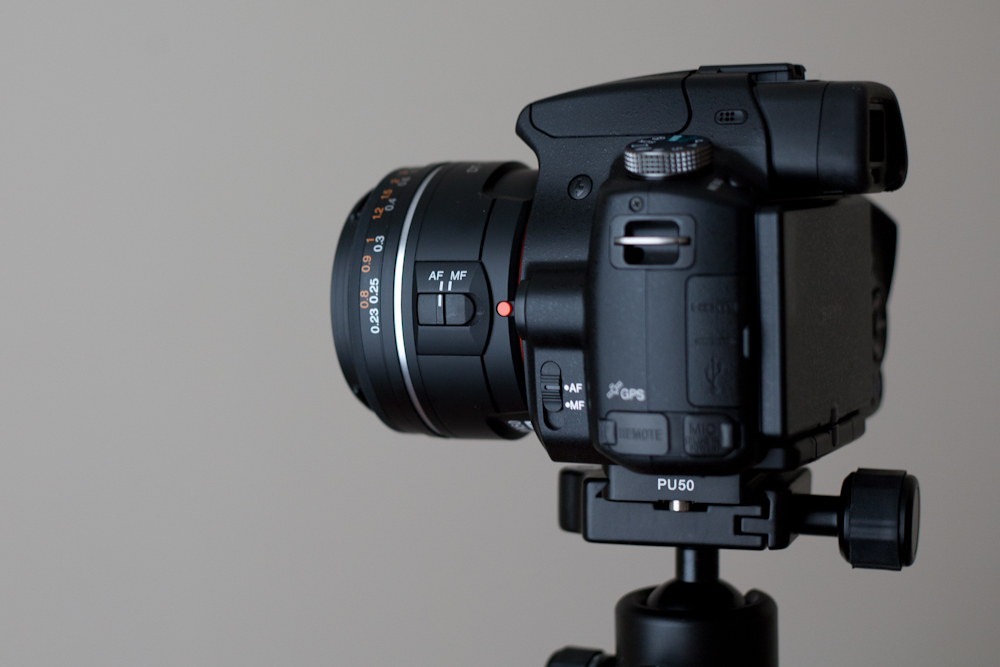
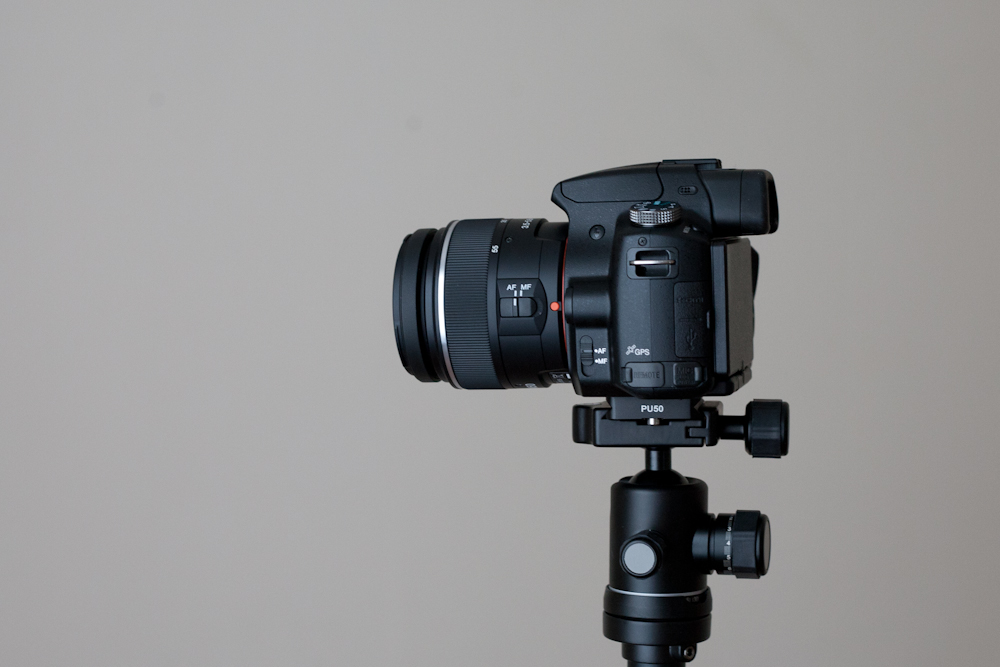
In this review, we will look at the A55 with the 18-55mm F/3.5-5.6 kit lens along with the Sony 35mm F/1.8 SAM lens. You can buy the A55 with the kit lens or you can buy just the body. If you’ve read any of my other posts, you know that I’m a fan of primes so we will have to see how the kit lens compares to Sony‘s fairly inexpensive Sony 35mm F/1.8 SAM lens.
Initial Impressions
I’ve only had about a half a day to get to know the A55 and let me say, this is one feature packed device. This camera has more functions, modes and features than most people will probably ever use. I feel like camera companies are adding features to simply one-up their competitors on the spec sheet but most of the features in the A55 seem like they would be quite useful. I particularly like the Sweep Panorama feature which I will discuss further in the next day of the review.
Look and Feel: The first thing you will notice is this the size of this camera…it’s rather small. It’s roughly the size of my Canon Rebel XT which feels tiny to me after using the Canon 5D for a few years. The body feels solid but it does have that entry level plastic feel. The grip has a rubberized texture which actually feels great in the hand. I had no complaints about holding this camera for a few hours with no strap. The body and lens combo are small and compact, about the same size as Canon’s Rebel series. The package feels slightly heaver than the Rebel but I would chalk that up to an overall better build quality. The Rebel XT doesn’t feel cheap, it’s simply that the Sony feels better in my hand.
The lenses feel a little cheaper than the body. The 18-55mm and the 35mm have a similar build quality which is nothing spectacular. I would put them a notch above something like Canon’s 50mm F/1.8 but I wouldn’t call them confidence inspiring. One drop from waist level would most likely result in these lens’ demise. The 35mm F/1.8 comes with a lens hood which is a nice touch, just one less thing to buy. Unfortunately, using manual focus makes these lenses feel even cheaper. Turning the focus ring makes me appreciate my “nicer” lenses. I hate that mechanical gear whirring and grinding you get when you try to manually focus a cheap lens. One nice touch that I have never seen before is a rubber grip around the focus ring. This rubber grip keys you off that you are grabbing the focus ring if you ever need to use manual focus over auto focus.
Ergonomics: To go along with the laundry list of features, it looks like Sony has made a button for each of them. The body is littered with buttons, so much so that I was constantly hitting buttons by accident. A small body with lots of buttons leaves the user with very little space to actually hold the camera. My hands are on the larger side so if you have normal or smaller hands, you shouldn’t have an issue. Like any new device, I’m sure you would get used to handling the A55 after using it for a bit.
One button, well it’s kind of a button, that I wish they would move is the scroll dial which is located on the front grip of the camera. This is really in a terrible location. If they insist on putting this wheel on the front of the camera, they should move it down to where your finger naturally falls. I’m sure they placed it in its current location so you wouldn’t accidentally change settings while you are simply holding the camera. The thing is, the dial requires a decent amount of force to move so I think it would be fine if they moved the dial to where your index finger naturally wants to fall.
Besides there being too many buttons, the rest of the A55‘s design is well thought out. The menus are intuitive and all of the buttons are clearly labeled and logically located. I also like how when you turn the mode dial you are presented with a brief description of what the mode does. For example, when you turn to SCN on the mode dial, it gives you a list of different scenes which you may be confronted with when shooting like portraits, macro, landscapes, sunsets, etc. The A55‘s menu also tells you what the camera will try to do in each setting. Take the Landscape Sceen mode for example. When you switch to this mode it states “shoots the entire range of the scenery in sharp focus with vivid colors.” This is a great way to help people get out of auto mode. It’s almost like Sony made an abridged in-camera user manual.
Screen & Live Viewfinder: The Live Viewfinder (LVF) is pretty slick and packs a ton of info onto a small screen. Along with all of your regular shooting data (ISO, Aperture, Shutter, etc.) there is: an electronic level that works in portrait and landscape, a histogram, GSP signal strength, and grid overlays. Unfortunately, I found the LVF to be less pleasing to use when compared to the excellent flip out screen. Next to the external screen, the LVF looks pixelated and crunchy. This is actually surprising as I always complain about not having a LVF for my Panasonic GF-1 but in most situations with the A55, I find it more enjoyable to use the external screen. You can shoot from the hip, get low to the ground and shoot from strange angles that you can’t when using the LVF. No one pays attention to a random guy looking down, but bring that camera up to your face and everything changes. I’ll continue shooting with both to see if my thoughts change on these viewing options.
Why Not the NEX-5?
One question that immediately popped into my head when I first started using this was “what would make someone buy this over a NEX-5?” The NEX-5 has a better build quality, it’s cheaper and it has an ASP-C sized sensor. So why dish out the extra cash for the A55? Well, we will take a good look at the A55 over the next few days to see if it is worth the change.
Be sure to check back for the next part of the A55 review.
Please Support The Phoblographer
We love to bring you guys the latest and greatest news and gear related stuff. However, we can’t keep doing that unless we have your continued support. If you would like to purchase any of the items mentioned, please do so by clicking our links first and then purchasing the items as we then get a small portion of the sale to help run the website.


